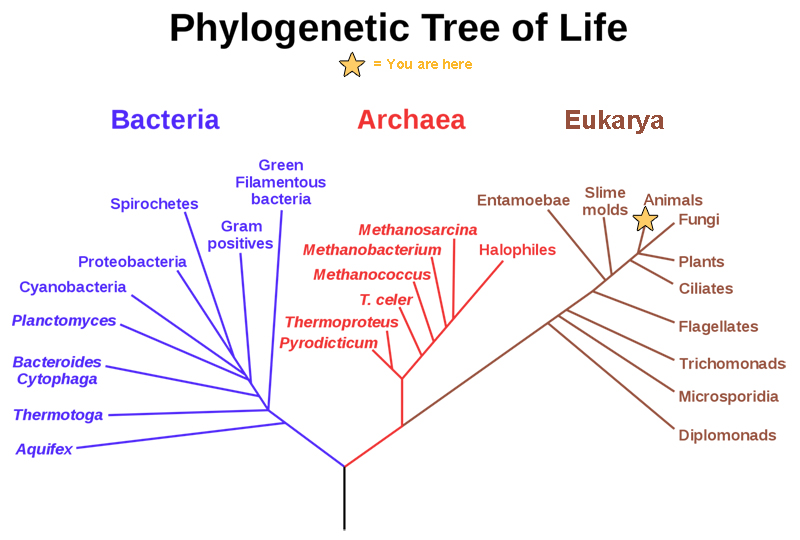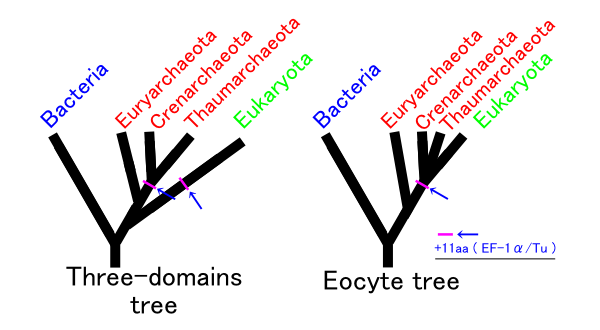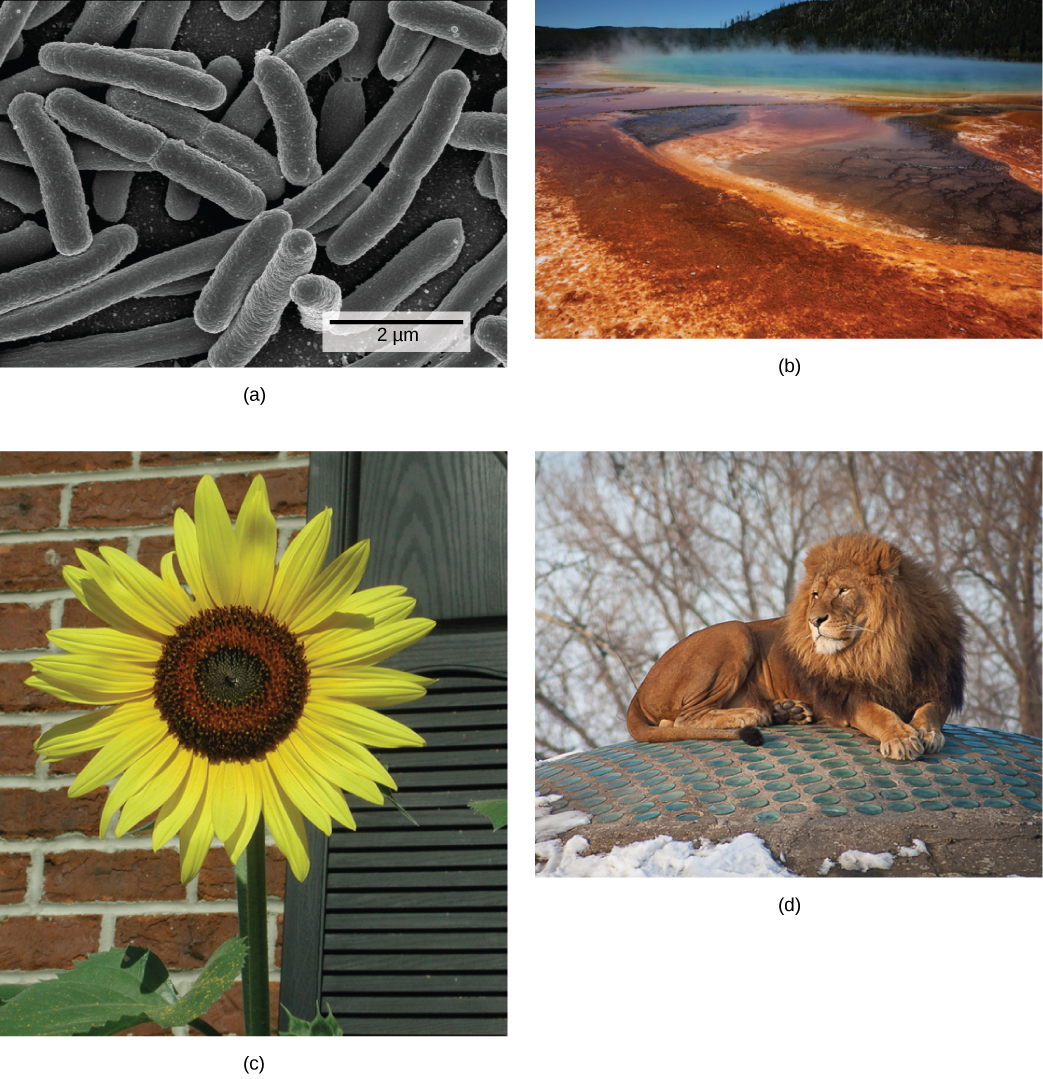The Diversity of Life
The fact that biology, as a science, has such a broad scope has to do with the tremendous diversity of life on earth. The source of this diversity is evolution, the process of gradual change during which new species arise from older species. Evolutionary biologists study the evolution of living things in everything from the microscopic world to ecosystems.

The evolution of various life forms on Earth can be summarized in a phylogenetic tree (Figure 1). A phylogenetic tree is a diagram showing the evolutionary relationships among biological species based on similarities and differences in genetic or physical traits or both. A phylogenetic tree is composed of branches (the lines) and nodes (places where two lines diverge). The internal nodes represent ancestors and are points in evolution when, based on scientific evidence, an ancestor is thought to have diverged to form two new species. The length of each branch is proportional to the time elapsed since the split.
While this is the most common way that is used to group organisms, other divisions have been proposed.
- Some scientists believe that organisms should be divided into two groups: Prokaryota (or Monera) and Eukaryota. In this method, Archae is typically included in Prokaryota. This view has become less popular due to scientific advancements, specifically genetic analysis of various organisms.
- Another two-group division groups Archae with Eukaryotes. This is often called the “Eocyte hypothesis”. This hypothesis has become more popular as the genomes of more Archaeic organisms are sequenced.

Viruses
None of the three systems currently include non-cellular life. As of 2011 there is talk about Nucleocytoplasmic large DNA viruses possibly being a fourth branch domain of life, a view supported by researchers in 2012.
Stefan Luketa in 2012 proposed a five-domain system, adding Prionobiota (acellular and without nucleic acid) and Virusobiota (acellular but with nucleic acid) to the traditional three domains.
Evolution Connection
Carl Woese and the Phylogenetic Tree
In the past, biologists grouped living organisms into five kingdoms: animals, plants, fungi, protists, and bacteria. The organizational scheme was based mainly on physical features, as opposed to physiology, biochemistry, or molecular biology, all of which are used by modern systematics. The pioneering work of American microbiologist Carl Woese in the early 1970s has shown, however, that life on Earth has evolved along three lineages, now called domains—Bacteria, Archaea, and Eukarya. The first two are prokaryotic cells with microbes that lack membrane-enclosed nuclei and organelles. The third domain contains the eukaryotes and includes unicellular microorganisms together with the four original kingdoms (excluding bacteria). Woese defined Archaea as a new domain, and this resulted in a new taxonomic tree (Figure 1). Many organisms belonging to the Archaea domain live under extreme conditions and are called extremophiles. To construct his tree, Woese used genetic relationships rather than similarities based on morphology (shape).
Woese’s tree was constructed from comparative sequencing of the genes that are universally distributed, present in every organism, and conserved (meaning that these genes have remained essentially unchanged throughout evolution). Woese’s approach was revolutionary because comparisons of physical features are insufficient to differentiate between the prokaryotes that appear fairly similar in spite of their tremendous biochemical diversity and genetic variability (Figure 3). The comparison of homologous DNA and RNA sequences provided Woese with a sensitive device that revealed the extensive variability of prokaryotes, and which justified the separation of the prokaryotes into two domains: bacteria and archaea.

References
Unless otherwise noted, images on this page are licensed under CC-BY 4.0 by OpenStax.
Text adapted from:
OpenStax, Concepts of Biology. OpenStax CNX. May 25, 2017 https://cnx.org/contents/GFy_h8cu@10.99:gNLp76vu@13/Themes-and-Concepts-of-Biology
Eocyte Hypothesis, Wikipedia. May 25, 2017. https://en.wikipedia.org/wiki/Eocyte_hypothesis
Domain (biology), Wikipedia. May 25, 2017. https://en.wikipedia.org/wiki/Domain_(biology)

